In her small house in Tan Thanh ward, 38-year-old Nguyen Hong Phuc meticulously assembles a miniature house, complete with a wood-burning stove, a small altar, and a couple enjoying tea and listening to the radio. Phuc, who considers herself an amateur in the art world, says she started making these miniature models as a hobby.
With a degree in postal and telecommunications, Phuc worked for several private companies. But after her mother's passing, she decided to focus on her personal interests and run her own small business to have more time for her family.
Over six years ago, during the Covid-19 pandemic, Phuc stumbled upon a video from Thailand about creating miniature models. Intrigued, she started researching, watching numerous videos on the subject, and purchasing materials to try it herself. She began with simple Mekong Delta stilt houses and boat models, and gradually, her passion grew.
"At first, my models weren't very attractive, and I had to discard many attempts," Phuc says, explaining that her initial goal was personal satisfaction, not selling or showcasing her work.
Phuc describes her creative process: first, she develops an idea and gathers materials. Then, she builds the frame to the desired scale, shapes the model, arranges the scene, and finally, paints it. She focuses on the frame and larger details first, before adding smaller exterior elements.
"The most challenging part is color coordination to create a realistic feel," Phuc explains. Each model measures approximately 20x30 cm, with parts connected by glue. She crafts most components herself, commissioning more intricate details.
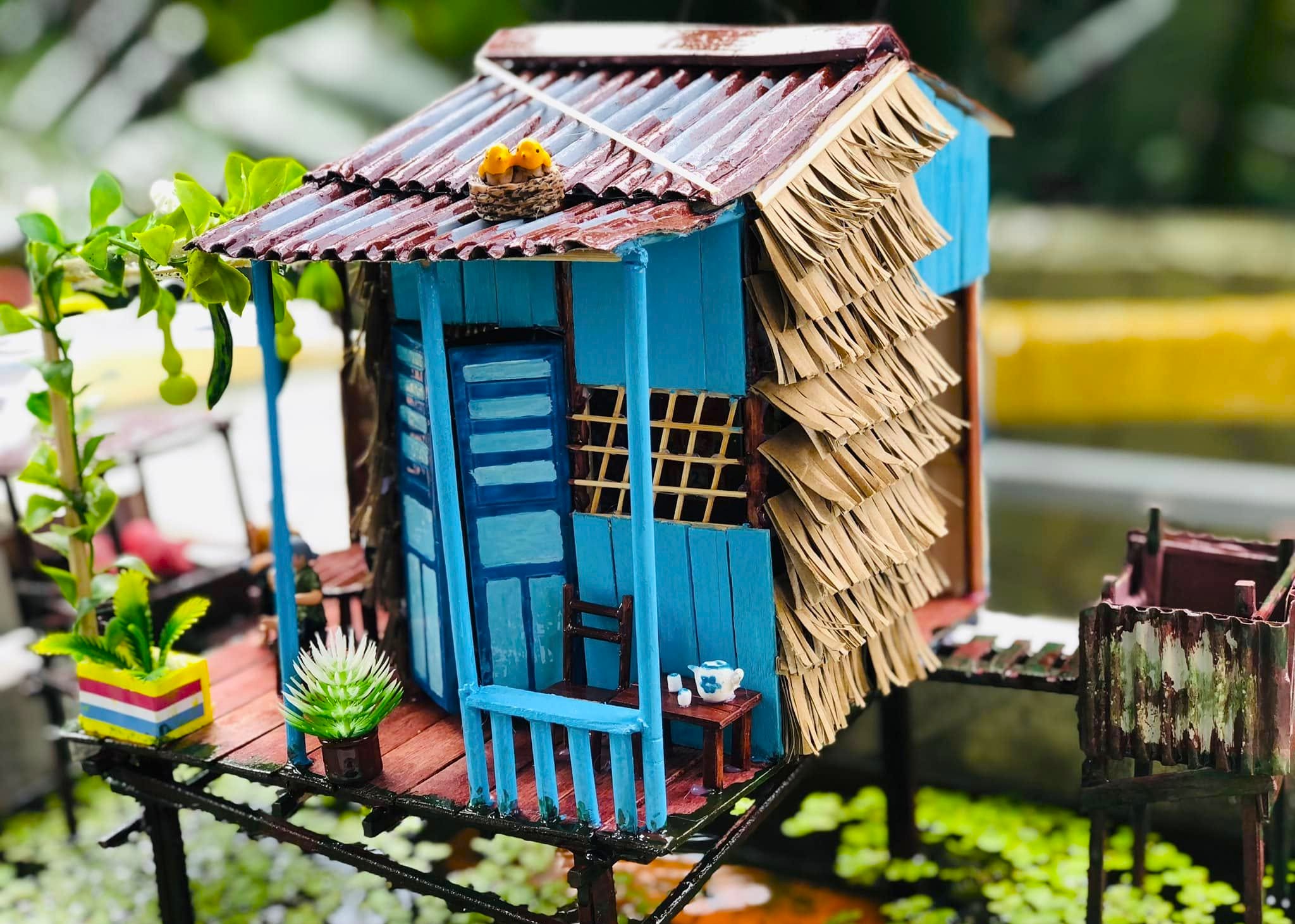 |
A small Mekong Delta house with simple corrugated iron roofing and leaf walls. Photo: An Minh
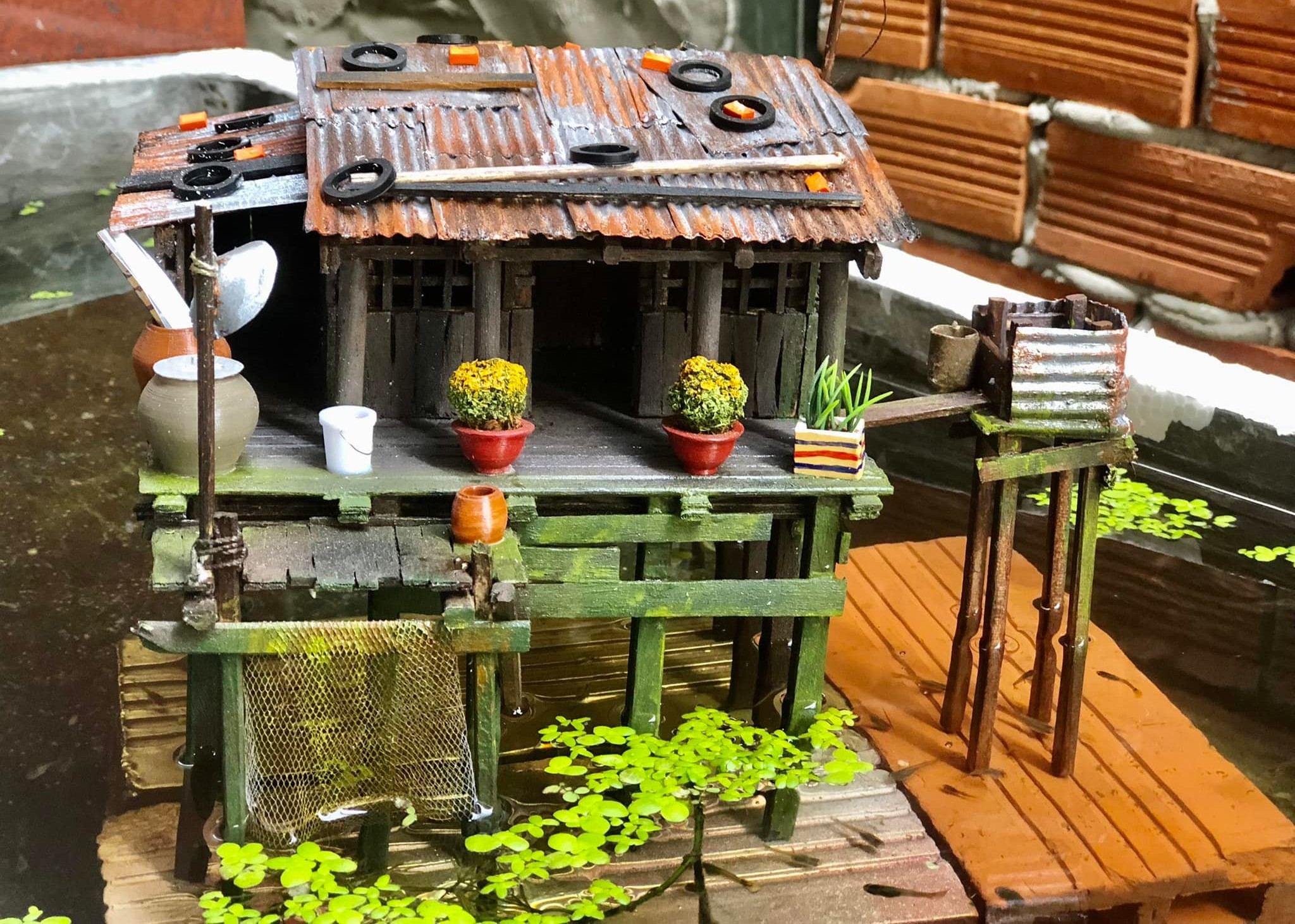 |
Phuc working on a miniature house. She is self-taught and has no formal art training. Photo: An Minh |
Besides focusing on realistic materials, Phuc also creates scenes highlighting the characteristics of stilt houses. Photo: An Minh
 |
A thatched-roof house with a spacious front yard surrounded by trees. Photo: An Minh
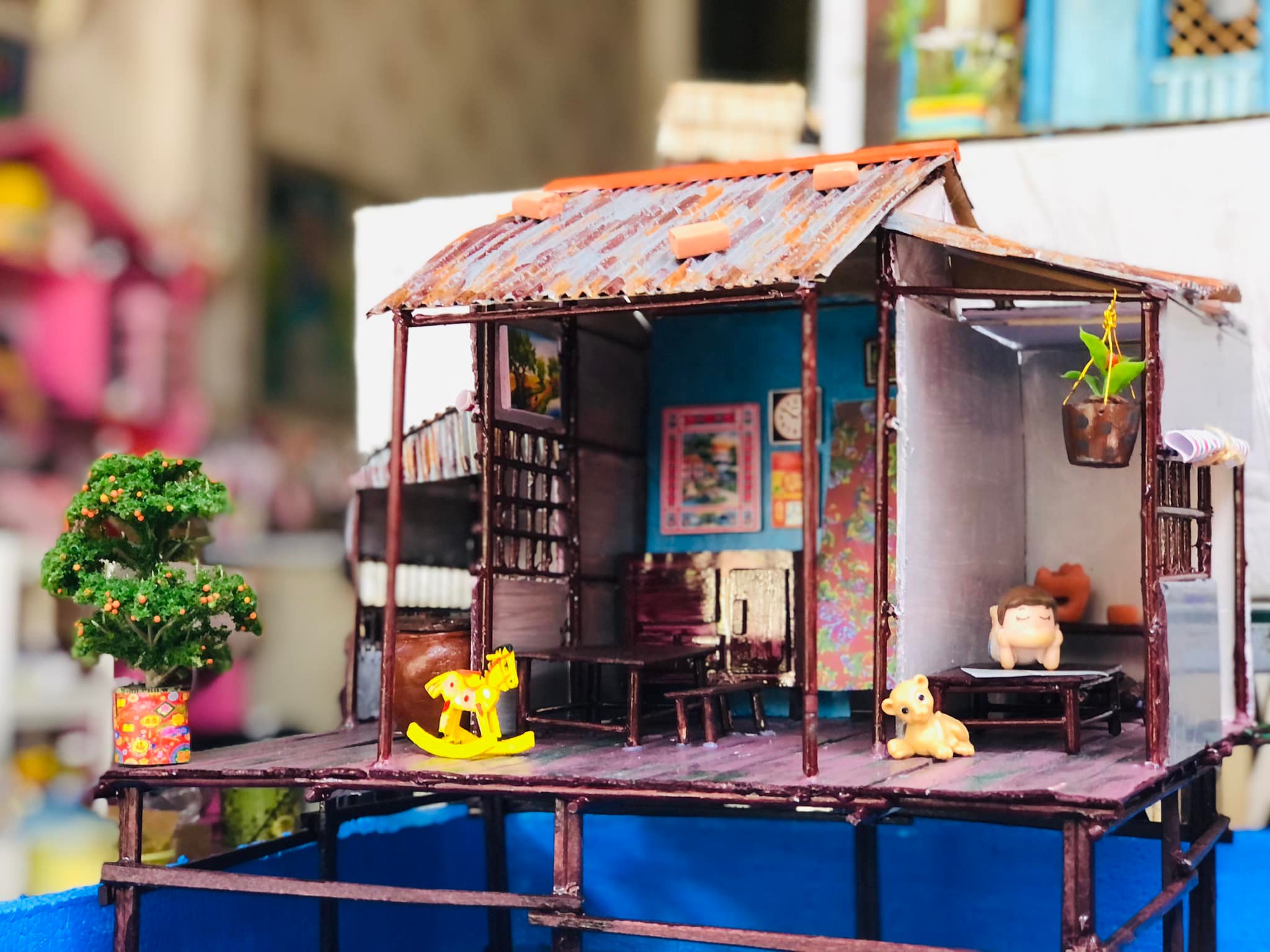 |
Phuc carefully chooses the colors for each model, balancing realism with customer preferences. Photo: An Minh
 |
A small house lit up at night. Photo: An Minh
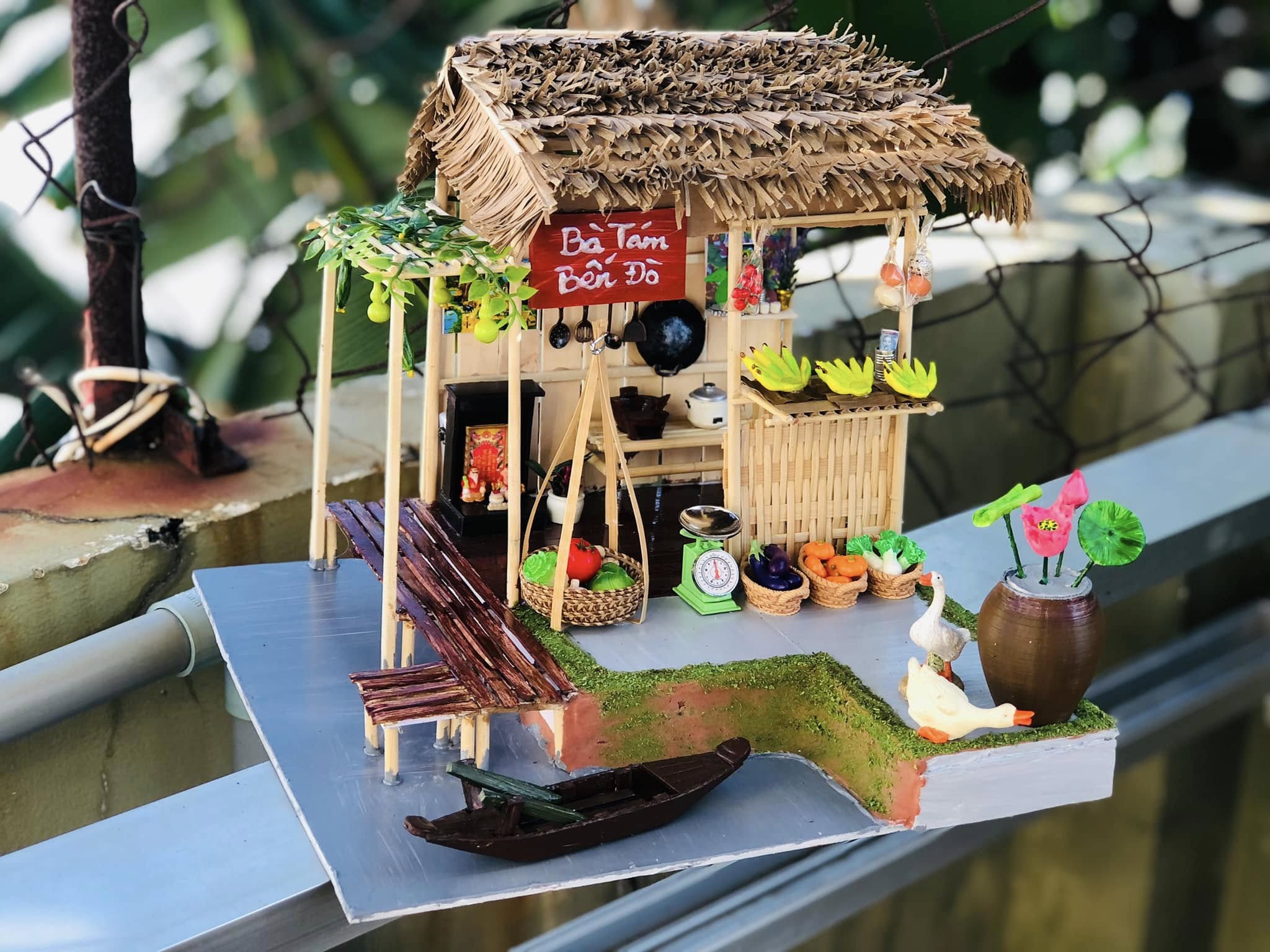 |
Ba Tam Ferry Terminal, a cherished project that took Phuc nearly two months to complete. Photo: An Minh
 |
A model of an old-fashioned classroom. Photo: An Minh
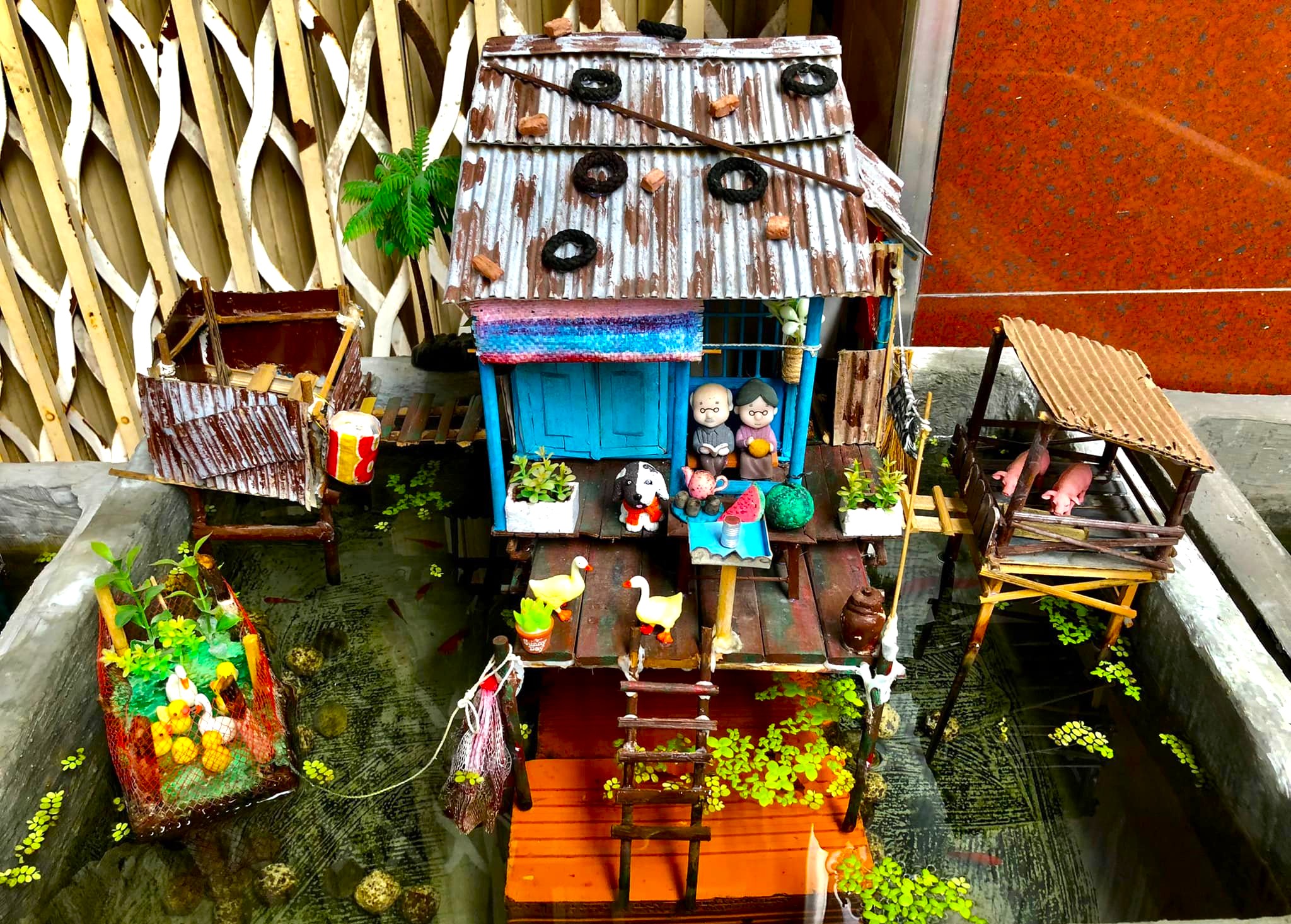 |
A model depicting daily life in a traditional Mekong Delta house. Photo: An Minh
With skill and patience, Phuc has created over 40 miniature Mekong Delta houses for her customers. Each house is unique, inspired by the region's lifestyle and her own childhood home. Depending on the complexity and her available time, a model typically takes about a month to complete.
"Creating details like the eaves and water jars evokes nostalgic memories of my carefree childhood. I cherish the simplicity of the past and want to share this atmosphere with my children, letting them experience the spaces where our parents and grandparents lived," Phuc says.
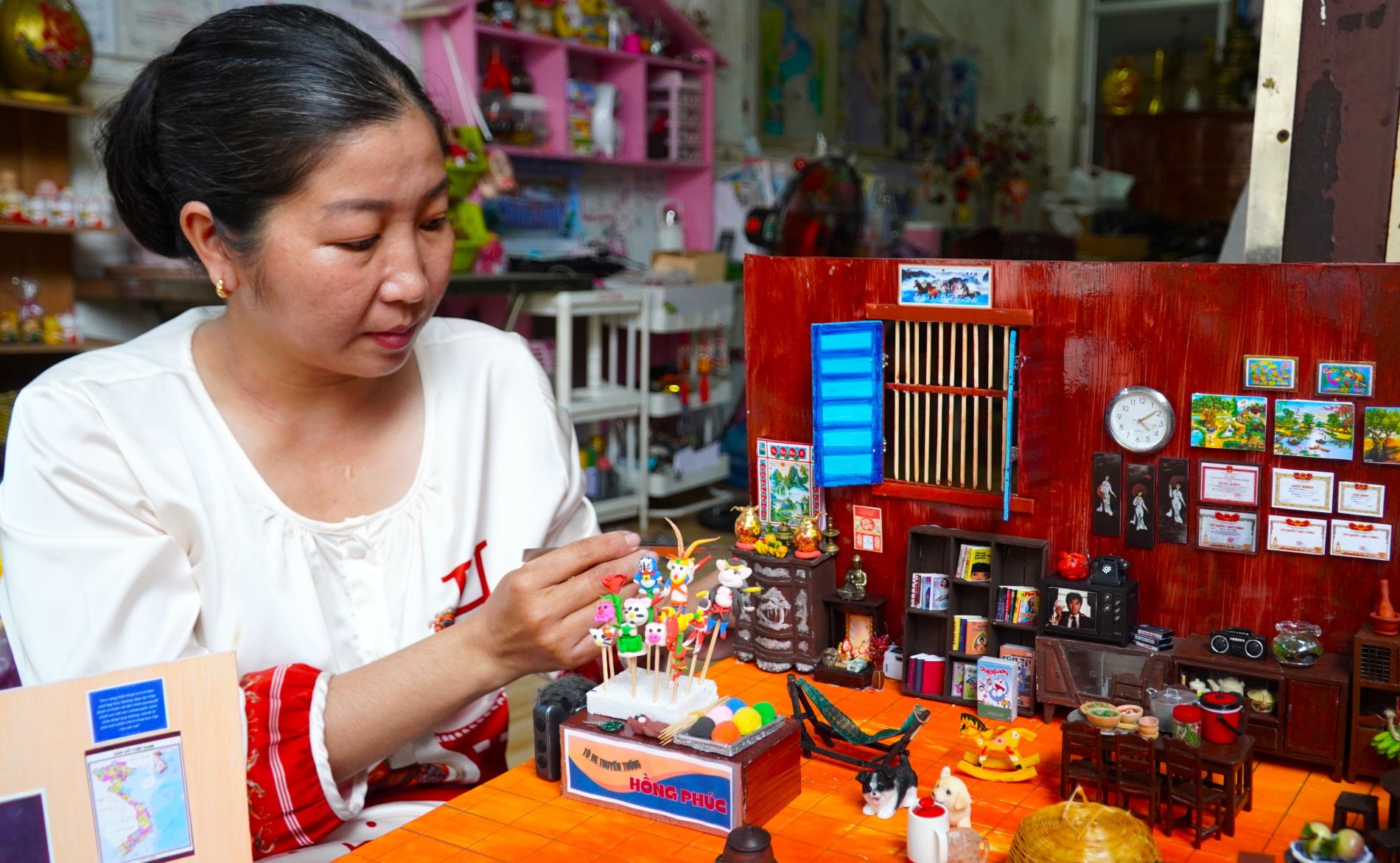 |
Among her many creations, the most time-consuming project was a model of the Ba Bay Ferry Terminal for a customer in Ca Mau. The intricate shaping process took nearly two months. "Initially, I considered declining the request, but I empathized with the customer's desire to recapture memories of her mother's ferry business," Phuc explains. She sold this model for 800,000 VND.
Phuc shares her creations on social media, and she's been surprised by the positive reception from friends and strangers alike. "Many people request different models, but due to my snack business and family commitments, I often lack the time," she says.
With only a few free hours each day after work, Phuc often declines urgent orders.
Some customers request models of old houses based solely on their memories, without any visual references. "In those instances, our shared appreciation for the past and the Mekong Delta lifestyle connects us," Phuc says.
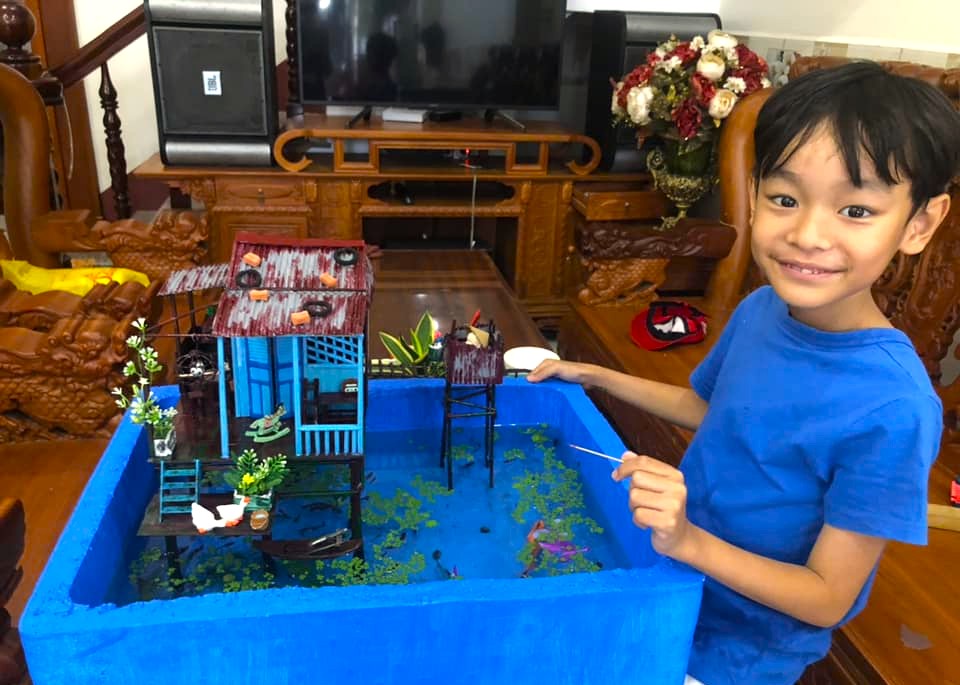 |
In addition to selling her models, priced from 500,000 VND, Phuc also lends them to schools to teach children about their heritage. Her joy comes not from the income, but from connecting with customers. She considers the value of her work immeasurable, often selling just to recoup material costs. Some customers even visit her home to observe the creative process, fostering a shared passion.
Phuc's greatest happiness lies not in the price paid, but in the memories her creations evoke. Beyond houses, she now creates models of classrooms and other scenes from traditional Mekong Delta life.
An Minh











